FootReviver™ Achilles Tendonitis Support Brace
£14.99inc VAT
- 1× FootReviver Achilles tendonitis brace designed to support the Achilles region and steady ankle movement in daily use
- For both men and women
- Available sizes (approx. UK shoe sizes): Small 3–5; Medium 5–8; Large 8–11
- Adjustable fit: multiple secure buckled straps let you set an even, comfortable hold and compression to suit your needs
- Stability around the ankle: built‑in side supports guide the heel in a straighter line; an optional front support panel can add extra guidance when needed
- Targeted compression: gentle, even pressure around the back of the ankle helps calm the area and manage mild swelling
- Stays in place: shaped wrap and subtle hold points help reduce slipping and twisting during wear
- Breathable, low‑profile build: open heel for airflow; slim profile fits inside everyday footwear; smooth edges sit flat under socks
- Ergonomic movement: flexible zones allow natural forward‑and‑back ankle motion while side‑to‑side control is maintained
- Padded interior comfort: soft cushioning at key contact points helps reduce rubbing over bony areas
- Durable for daily wear: reinforced stitching and strengthened attachment areas help the fit stay consistent through regular use
- Straightforward to put on: settle the heel fully back, then fasten the lower strap before the upper straps; set straps so they lie flat without twisting
- Suitable for everyday wear and light activity when advised; often used during recovery from Achilles tendon irritation where steadying and gentle compression help
- Covered by our money‑back guarantee (30 days)
Daily heel pain can make simple steps feel uncertain. If soreness and stiffness at the back of the ankle are shaping your routine, a well‑chosen support can help day‑to‑day movement feel steadier while symptoms settle. The aim is calm, predictable steps during the tasks that usually set symptoms off, without feeling bulky or restricted.
Understanding Achilles tendonitis
The Achilles tendon links the calf muscles to the heel bone and helps lift the heel when you walk, climb stairs, or push off to run. Achilles tendonitis describes irritation in this tendon. After repeated strain, the tendon and the surrounding tissue can become sore and stiff, usually felt at the back of the heel or a few centimetres higher up. Discomfort often eases as you get moving, then returns after heavier use or the next morning. Day to day, this can turn simple tasks such as standing after sitting or stepping down stairs into moments where the ankle feels tight or tender.
Why it flares up
After a sudden increase in how much you do—longer runs, more hills, or extra time on hard floors—the tendon works harder before it has adapted, so it becomes irritated. When the foot rolls inwards at the arch (often called overpronation), the heel can twist as it lifts, which puts extra strain through the tendon. Tight calf muscles and reduced ankle flexibility can add to this because the tendon stretches more for the same movement. Symptoms often ease with short rests, gentler activity, and gradual progressions that the tendon can tolerate.
Symptoms and tell‑tale signs
- Morning stiffness at the back of the heel or along the tendon
- Soreness when pressing the tendon or squeezing it between two fingers
- A warm or thickened feel over the sore area
- Discomfort when climbing stairs or walking uphill
- A tight or pulling sensation after sitting for a while
- Aches that build during longer walks or time on hard floors
When to seek care
Arrange an assessment if pain follows a sharp pull, if you cannot push off the ground, or if there is sudden swelling with difficulty bearing weight. Seek advice if symptoms are worsening over days, if night pain is significant, or if you notice numbness, colour change, or spreading warmth. A clinician can check the calf and ankle, compare sides, and advise on activity changes and exercises. For personalised guidance, speak to a physiotherapist or GP.
Practical ways to feel better
When mornings feel stiff, start with short, gentle ankle motion in the first week so the tendon moves without sharp pulls, which helps calm soreness before steps. During daily tasks, ease back on hills and fast direction changes over the next fortnight so the tendon is not repeatedly tugged, which often reduces late‑day aches. Before walks, try a slow calf stretch held lightly for comfort, not pain, so the muscle relaxes and pushing off feels smoother. Across your week, spread busy days apart so the tendon has time to settle, which many people find leads to steadier progress. After activity, use a brief, cool compress if the area feels warm, so swelling eases and the tendon feels calmer later on.
How a support can help day to day
When first steps after sitting or first thing in the morning feel tight at the back of the heel, steadying the heel can calm the Achilles tendon. A well‑fitted ankle support guides the heel in a straighter line, which reduces the inward or outward twist that tugs on the tendon, so the first few minutes often feel more predictable. Gentle, even compression around the Achilles region can also help settle mild swelling and improve awareness of ankle position, so placing the foot feels more deliberate as the ankle warms.
On stairs and during longer walks, supportive contact around the ankle shares strain across a wider area, which means a single sore spot along the tendon is not taking all the pressure. By limiting abrupt side‑to‑side movement while keeping forward and back motion free, the support helps the heel track more consistently as you push off, so climbing stairs or stepping off a kerb tends to feel more controlled. Many people find this reduces late‑day pulling on hard floors and makes uneven pavements feel less uncertain.
Across the week, using a support during the moments that usually set symptoms off—first steps after sitting, stair use, and longer spells on your feet—may reduce repeat strain on the Achilles tendon. Paired with a gradual activity plan, this steadier pattern can lower the chance of another flare over the coming weeks. It does not replace strengthening or clinical care, but it can make daily tasks more comfortable while symptoms settle.
To get started, wear the support for short, planned periods in week one and check that the hold feels even rather than tight. Place the heel fully back, set the closures in sequence, and check skin marks fade shortly after removal. As comfort allows over weeks two to four, extend wear during busier parts of the day and for the tasks that most often trigger your symptoms.
FootReviver Achilles tendonitis brace: how it helps day to day
Built to steady the ankle during everyday tasks, this brace balances a secure fit, guided movement, breathable comfort, durability, and easy wear so the tendon feels supported while you stay active.
Adjustable fit
This brace uses multiple buckled straps around the ankle and midfoot so you can set a close, even hold that suits your needs. The straps anchor against the body of the brace and cross the joint, which lets you fine‑tune how firmly it sits and where the hold is strongest. By spreading pressure across wider contact areas, the fit feels supportive rather than tight when set correctly. Once adjusted, the closures stay in place, so the hold remains consistent as you move. A secure fit limits small shifts between the brace and skin, which helps the heel track more predictably with each step. In practice, that means a steadier feel when you start walking after sitting or when you climb stairs.
Stability around the ankle
Rigid side supports run along the inner and outer ankle to guide movement in a straighter path. An optional front support panel, with a built‑in metal element that can be gently pre‑shaped, adds guidance at the front to help resist sudden shifts when you push off or turn. Working together, these supports reduce abrupt inward or outward rolls and help limit end‑range extremes, so the heel is less likely to twist under strain. The Achilles region is supported by the wrap described below, which keeps roles clear. In daily use, you may notice firmer, more controlled steps on uneven pavements and more confidence when stepping off a kerb or turning on one foot.
Targeted compression around the Achilles
The wrap of the brace applies a gentle, even hold around the back of the ankle and along the Achilles region. Pressure is spread rather than focused at a single point, so contact feels supportive rather than restrictive when set correctly. The steady contact can help calm irritated tissues during the first minutes on your feet after sitting and reduce that pulling feel that builds on hard floors. In day‑to‑day use, many people notice smoother, more deliberate steps when moving between rooms at work or during a short neighbourhood walk, with less localised tenderness at the back of the ankle.
Achilles channel relief
A shallow relief channel runs along the inside of the brace where the Achilles tendon sits, just above the heel. By slightly recessing contact in this strip, the design reduces direct pressure and friction on the sore area, which helps the tendon feel calmer as the ankle moves. The low‑friction surface guides fabric glide, so there is less rubbing during the first minutes after sitting and fewer hot spots on longer walks. Because the channel sits within the wrap, the surrounding areas still provide an even hold, so the tendon feels supported without a single point taking the strain. In daily use, many people notice that stair climbing and steady walks feel more comfortable, with less awareness of the brace over the tender strip.
Stays in place during wear
Shaped wrapping around the ankle bones and subtle hold points at key contact areas help the brace remain in position as you move. By increasing contact where the ankle naturally narrows and following those curves, the design reduces creeping and twisting through the day, which helps the straps maintain an even hold. This stable placement works alongside the side supports so the heel follows a more neutral line without repeated micro‑shifts. The stay‑put approach is kept slim so it does not add bulk inside footwear or catch on socks. In practice, that means fewer mid‑day readjustments and a consistent feel when stepping off a kerb or turning on one foot.
Breathable, low‑profile design
A lightweight, breathable construction keeps bulk down so the brace sits comfortably inside most everyday footwear. An open cut‑out at the heel allows extra airflow around the heel bone and reduces rubbing where the heel meets the shoe. The slimmer profile reduces crowding in the heel cup and pairs easily with a sock. Thickness is kept low over bending points at the front and back of the ankle so the brace lies flat without bunching under laces. Smooth, rounded edges and soft bindings run along the top and bottom to sit flat under socks and lower the chance of hot spots at common contact points. In daily use, this adds up to cooler wear with a discreet fit for commuting, workdays, or gentle activity.
Moisture management during wear
A soft, moisture‑wicking fabric forms the body of the brace and draws sweat away from the skin, helping the inside feel drier during longer spells on your feet. By moving moisture off the surface, the fabric reduces the clammy feel that can build on warm days or in heated indoor spaces, which lowers the chance of rubbing. The drier contact pairs with the brace’s breathable build, so comfort is easier to maintain during gentle exercise, shorter runs, or training sessions. In use, many people find the ankle area feels calmer over time because the skin stays drier under the brace.
Padded interior comfort
Soft, cushioned panels inside the brace reduce pressure over bony points around the ankle and at common strap contact zones. By adding a light layer between the brace and skin at these areas, the padding helps spread contact so it feels calmer under tension, without creating tight spots. The panels are shaped to sit flat and settle further after the first few wears, so the brace remains comfortable inside everyday footwear. In practice, standing at a counter, walking through a supermarket aisle, or setting off after sitting can feel more comfortable, with fewer pressure marks at typical contact points.
Ergonomic flex zones for natural movement
Thoughtful panel shaping and flexible zones allow forward and backward ankle motion while avoiding bulk over bending points, so normal walking feels natural. More flexible areas sit over the front and back of the ankle, while firmer elements at the sides support side‑to‑side control. This balance helps the Achilles region move smoothly through daily tasks without the brace feeling stiff where it needs to give. Because the shaping follows common footwear lines, it also reduces bunching under laces and keeps the profile slim. In practice, you can climb stairs, walk on pavements, and set off after sitting with a more fluid feel, while side‑to‑side control remains in place for steadier steps.
Durable build for daily wear
Reinforced stitching and strengthened attachment areas are placed at high‑stress points so the brace stands up to regular use. By backing strap paths and key junctions, the structure resists stretch and twisting when closures are tensioned, which helps the fit you set in the morning hold its shape through the day. A hard‑wearing outer layer copes with frequent on‑off and contact with footwear while remaining flexible for normal movement. This durability pairs with the adjustable system to keep support consistent on stairs and during longer walks. In practice, that means reliable, day‑to‑day performance across a workweek without the sense that the hold softens by late afternoon.
Other conditions it may help
This brace is also used during recovery from related ankle and heel issues where steadying movement and gentle compression are useful. The short overviews below can outline each condition in plain terms and, where relevant, how it links to Achilles tendonitis so you can judge fit more easily.
What to expect
Over 1–2 weeks, many people notice calmer first steps after sitting and fewer sharp pulls on stairs. Over 2–4 weeks, with steady use during busier periods and a gradual activity plan, walking on hard floors and end‑of‑day comfort often improve. Mild early awareness of compression usually settles as you refine the fit. If pain worsens or new symptoms appear, reduce wear time and seek clinical advice.
In summary
The FootReviver Achilles tendonitis brace is designed to steady the ankle, apply even pressure around the tendon, and make everyday movement feel more secure while symptoms settle. Your order is covered by our money‑back guarantee, so you can assess fit and comfort at home. If it aligns with what you need, proceed with your order when ready.
Important information
Fit and adjustments
The brace sits around the ankle and heel. If using the optional front support panel with a built‑in metal element, gently pre‑shape it to follow the front of the ankle and lower shin (avoid sharp bends), then place it at the front before fastening any straps. Slide your foot into the brace, settle the heel fully back, then fasten the lower strap before the upper straps. Set the straps in sequence so each lies flat without twisting, and adjust until the hold feels even and secure without pinching. Check that the built‑in side stabilisers are centred along the ankle bones. Recheck the fit after a few minutes of wear and after the first wash. Small adjustments later in the day are normal if the ankle feels different after walking or sitting. If the optional front panel feels uncomfortable, remove it and refit the brace.
Usage and care
Put the brace on over a clean, dry sock for comfort. Wear inside suitable footwear with enough room at the forefoot. Remove the brace for sleep unless advised otherwise. Hand wash in cool water with mild detergent, rinse thoroughly, and air dry away from direct heat. Store flat in a dry place. Do not tumble dry or iron.
Safety and suitability
This product is a supportive aid and is not a substitute for diagnosis or treatment. Do not wear the brace over open wounds, broken skin, marked swelling, or suspected infection. If you have concerns about circulation, nerve sensation, skin integrity, diabetes, or recent surgery, seek advice from a clinician before use. Stop using the brace and consult a clinician if pain, numbness, or excessive redness occurs. Do not use during pregnancy. For personalised guidance, speak to a physiotherapist or GP.
Returns and our guarantee
Your purchase is covered by our money‑back guarantee. You can return the item within 30 days from the day it is received in the post, provided it is in its original condition. To start a return, contact our customer service team with your order details.
2 Reviews For This Product
Fast & Secure Checkout Through Paypal
Pay with Paypal the secure payment gateway that accepts all credit and debit cards. Paypal is free and secure and no credit or bank information is ever stored or shared with us.
Fast Dispatch
Enjoy your items soon with quick dispatch via Royal Mail First Class. Expect to have your items between 1-3 days for domestic orders. 7-10 Working days for international orders.
Return Policy – 30 Day Money Back Guarantee
We are so confident that you will just love our product that we offer a full 30 day money back guarantee. In the unlikely event, you are unhappy with your purchase you can simply return it within 30 days for a refund. Please contact us via the form on the contact us page to start your return.
To return an item please send it to: Nuova Health UK, 81 Highfield Lane, Waverley, Rotherham, S60 8AL. Please include a note with your order id so we know who to refund. Please retain your postage receipt as proof of postage. All that we ask is that the item is in the original packaging and unused.


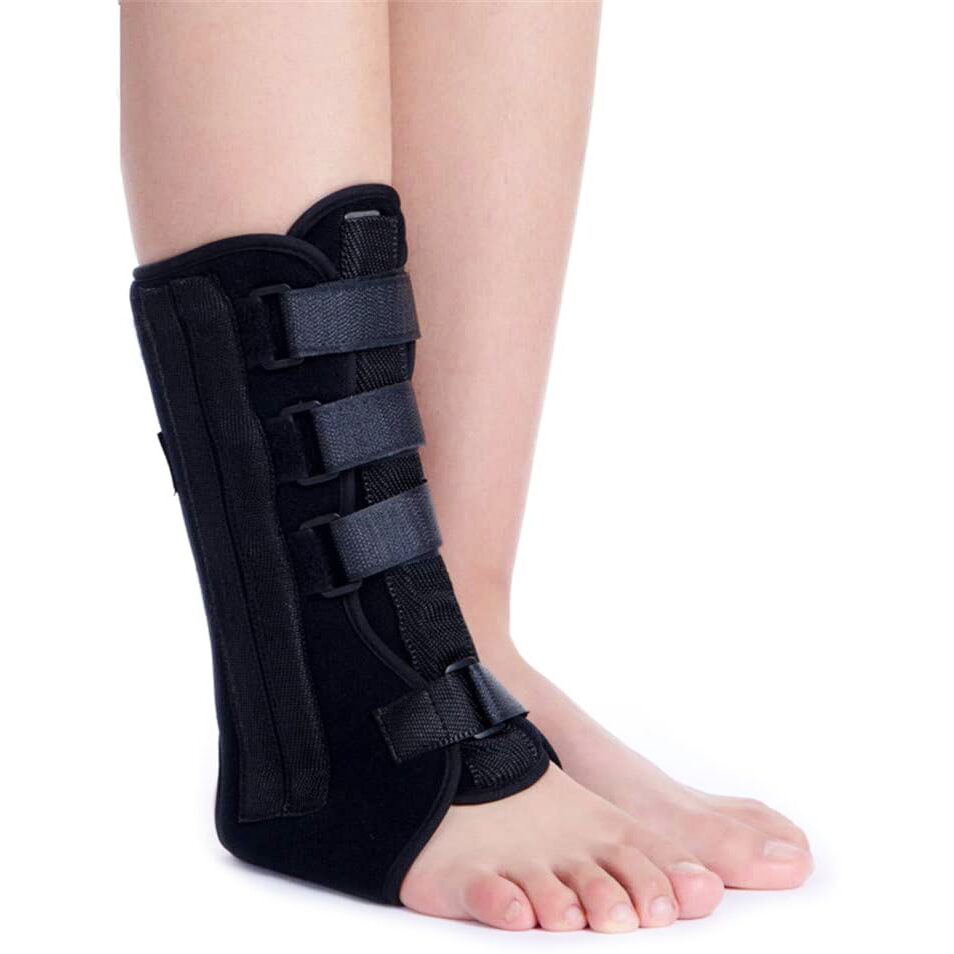


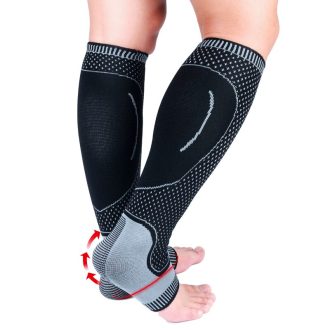
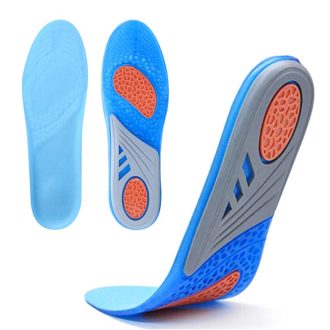
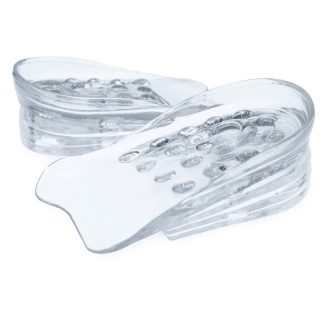

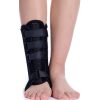
by Kevin Dyke
Wearing this brace has really improved my Achilles tendonitis and can walk without pain now. Thanks!
by Baz Nugent
In the last 3 years I have ruptured and torn both Achilles tendons. To help recovery I have purchased 2 supports which been most helpful in protecting against further damage during recovery. However, both front steel inserts have sheared whilst wearing the brace playing golf.
Despite purchasing a number of alternatives, to date, I haven’t found anything better.